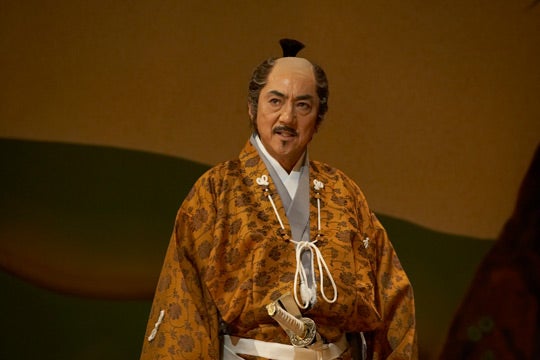Anjin; The Shogun and the English Samurai, Sadler's Wells, London

Your support helps us to tell the story
From reproductive rights to climate change to Big Tech, The Independent is on the ground when the story is developing. Whether it's investigating the financials of Elon Musk's pro-Trump PAC or producing our latest documentary, 'The A Word', which shines a light on the American women fighting for reproductive rights, we know how important it is to parse out the facts from the messaging.
At such a critical moment in US history, we need reporters on the ground. Your donation allows us to keep sending journalists to speak to both sides of the story.
The Independent is trusted by Americans across the entire political spectrum. And unlike many other quality news outlets, we choose not to lock Americans out of our reporting and analysis with paywalls. We believe quality journalism should be available to everyone, paid for by those who can afford it.
Your support makes all the difference.If you think a play that sets out to celebrate the 400th anniversary of UK-Japan relations sounds in danger of becoming a dry history lesson, you'd be right.
Anjin, directed by Gregory Doran, the Royal Shakespeare Company's Artistic Director, evolved as part of an RSC project looking at what was going on in the world during Shakespeare's lifetime. It's based on the true story of William Adams (Stephen Boxer), from Kent, who was shipwrecked on the coast of Japan in 1600. Adams became the trusted advisor of Ieyasu Tokugawa (Masachika Ichimura), who then won a battle to become the top Shogun (military ruler) of the feudal government of Japan.
The play takes this simple and intriguing story and makes it incredibly complicated, losing its focus, lacking exposition and introducing superfluous elements. Some scenes are agonisingly long, while others are too short to pack the emotional punch they deserve. Several minutes are taken up with the old Shogun telling a young boy, who no-one really cares about, that he needs to be beheaded to keep the peace in Japan, yet mere seconds are spent on the crucifixion of one of the central characters.
The play is spoken partly in English, partly in Japanese, with surtitles. The linguistic confusion engenders sympathy for Adams as a stranger in a foreign land and creates humorous moments -- but it makes for a slightly stilted performance where characters waste time translating or repeating each other.
The play is rescued from boredom by a stand-out Lady Macbeth-style performance from Yoshiko Tokoshima as Yododono, a power-hungry mother intent on overthrowing the wise Tokugawa by manipulating her son. Yuki Furukawa also brings subtle depth to Domenico, a conflicted monk who befriends Adams.
Visually, it works. Yuichiro Kanai’s sliding screen sets with painted golden clouds and colourful cranes are imaginatively opulent. On the stage, an occasional bamboo house or hanging cherry blossom adds texture, and a series of backlit images of maps, Japanese art and shooting stars form a beautiful backdrop to the action.
It is possible to navigate this three-hour-long mind maze of historic facts without getting lost; if you invest half a day researching Japan’s major battles from 1600 to 1616 and the origins of the Tokugawa shogunate of Japan. If, however, that doesn't sound like a fun way to spend your afternoon, then this play probably isn't for you either.
31 January - 9 February
Join our commenting forum
Join thought-provoking conversations, follow other Independent readers and see their replies
0Comments